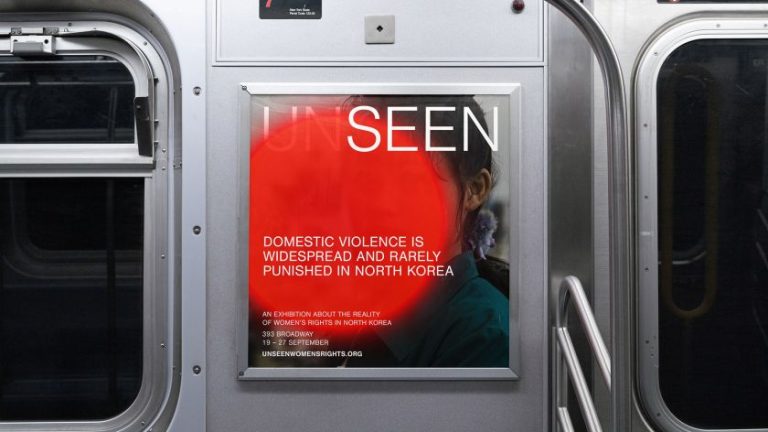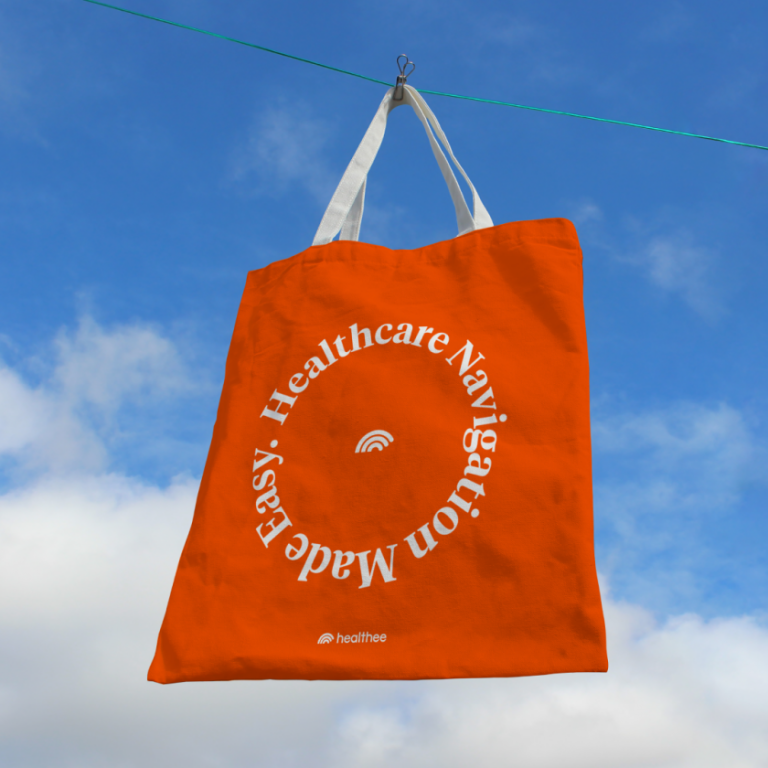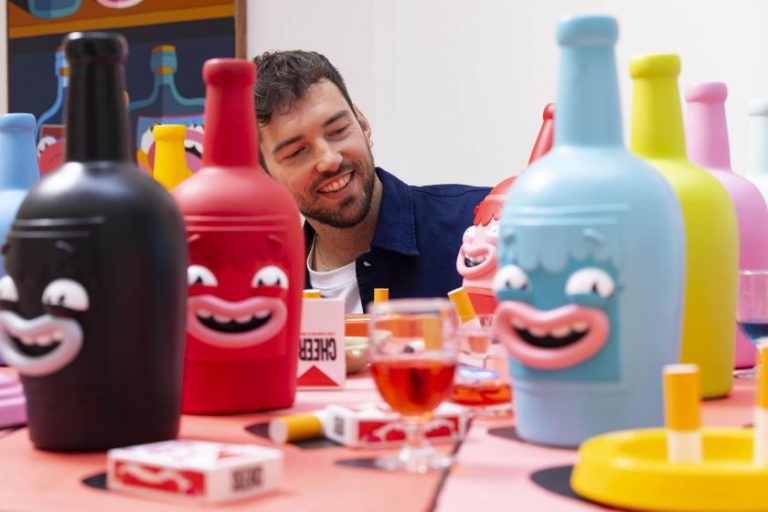Image licensed via Adobe Stock
Want to make cash from your personal work? These insider tips will help boost sales, engage customers, and stand out in the bustling creative scene.
Who doesn’t love an art fair or creative market? They’re a great way to find cool, quirky, and unique pieces: everything from limited edition prints, postcards, greeting cards, handmade jewellery, candles, or even full paintings and sculptures. And if you’re an artist, illustrator, or designer yourself, they’re a great opportunity to make money doing what you love.
These fun gatherings offer the perfect opportunity to showcase your work, connect with potential customers, and build your brand. But getting started can be, well, quite terrifying. Even creatives who’ve been doing it for years can find it tough on a bad day or when the economy takes a downturn.
So, to help you make the most of these events, we asked experienced creators who have found success in the art fair and market scene to share their best tips. We’ve gathered together some of their best advice in our article below, while you can read the full discussions on Threads and X.
1. Include a range of prices
We’ll start with advice that we’ve heard from many people in all sorts of areas. In fact, it’s pretty much a universal rule. Don’t just list everything at the same price: offer a diverse range of price points.
“I’ve been selling at illustration fairs and art markets for years,” says illustrator and pattern designer Jacqueline Colley. “And I always think it’s important to have a broad spectrum of prices, from cards that are on the cheap end to hand-made-silk screen prints that are expensive. That way, people can purchase your work whatever their budget.”
This approach ensures you have something for everyone, from casual browsers to serious collectors. This means that if someone is watching the pennies, they’ll feel better about buying lower-priced items. If another customer feels flush, they’ll enjoy splashing out on the top-priced items. And probably the majority of people will go for somewhere in between, convincing themselves they’re getting a good balance between quality and value. In short, everyone feels good about what they’re chosen.
Illustrator and designer Damon Sheeley adds: “Make sure there is clarity in your pricing and make sure it’s visible. You’ll lose people otherwise.” We couldn’t agree more: asking how much stuff costs is such a potential embarrassment (because you might not be able to afford it) that most people don’t bother and just move on.
2. Be personable and chat to people
If you’re shy or introverted, you may not like this one. But here’s another tip that almost everyone in the game will offer: you won’t get sales by passively sitting behind your desk.
“It’s important to actively engage with customers if you want to stand out among other vendors,” stresses children’s book illustrator and creative director Dawn M. Cardona. “No matter how beautiful your work is or how attractive your displays are, if you are sitting back and hiding behind your displays, you are missing so many opportunities to connect with your community.”
That said, don’t go to the opposite extreme and pester people to buy. Engaging with potential customers is not just about making sales; it’s about building connections and creating memorable experiences. Your personality and ability to connect with visitors can often be the deciding factor in whether someone purchases your work or not. And crucially, whether they become repeat buyers.
As Dawn says: “Sales are good, but should not be your only focus at in-person events. I mean, as artists, how often do we get to meet and chat in real life with our collectors? Never take that for granted!”
Most fundamentally, as illustrator Vickysworld advises, “Say hello to everyone who passes by, and if someone seems a bit interested, tell them about your work. I reckon a huge number of sales are missed just because makers don’t engage with their audience and give a little back story on their creations.”
Printmaker and illustrator Jason Limberg agrees. “The biggest thing I always see is that engaging and talking to your customers goes a long way in making sales and connections,” he says. “Having a nice set-up and good artwork is not always enough. People like to make that connection with the artist as it gives them a story to share, a deeper bond to the art.”
3. Give off the right vibe
Are you having trouble engaging people with your chat? Perhaps you’re giving off the wrong vibes. Think about how you feel when you wander around a market as a customer.
We’ve all experienced sellers who spur you to walk a little bit faster, even if they’ve technically done nothing wrong. It’s often a subconscious thing. So it’s important you don’t also put people off instinctively by coming across as either overly keen or sullen and disinterested.
Another issue can be if you obviously lack confidence: think of how we sense a stand-up comedian is out of their depth and how uncomfortable that makes us feel. So, how do you get around that? Here’s some great advice from Géraldine Wise, who organises markets in Bristol’s trendy Windmill Hill district. “Look busy – but not too busy! – behind your stall so it’s not intimidating for people to come forward. For example, stamp your bags, tidy, do your craft, etc. If possible, don’t sit because perching on a stall makes you more approachable. And offer samples to touch, smell, etc: they are great conversation starters.”
Also, remember that people are less likely to want to stick around if they feel pressured physically. So as Damon Sheeley advises: “Allow people enough room in your booth to get out of the main aisles of the event and into your space.”
4. Stand out visually
In a sea of stalls, getting noticed is key to attracting potential customers. A well-designed, eye-catching display can draw people in and make a lasting impression, even in a crowded market. So why not apply all the skills you’ve developed as a creative to crafting the perfect visual environment for your stall?
This can involve a lot of work, but the payoff can be huge. “I found that having a fun and bright display has been really helpful at the markets I’ve been to,” says freelance illustrator and comic artist Jamie England. “Also, having a range of stickers is good because they’re fun to make and are a cheaper option for people to buy.”
Take inspiration, too, from screenprinting duo Luce and Scott, aka Toucan Tango. “We found that by using a photography backdrop to elevate our work above the table, it could be spotted from the other side of the room,” they say. “They’re relatively cheap to pick up online, lightweight, and we also use them for pop-up T-shirt rails and drying racks when printing at live events.”
5. Help people find you again
Art fairs and markets are typically bustling events where visitors don’t have either the time or the inclination to buy something there and then. So, ensuring people can easily find you after the event is crucial for building long-term relationships and future sales.
Graphic designer Arin Fishkin shares her own strategy in this regard. “I have stickers printed with my logo,” she explains. “The back side is a mini business card with a QR code pointing to my Instagram. When someone seems interested and says they’ll be back, I never expect them to come back, so I give them a sticker so they can find me later.
“I take notes on what people ask for that I don’t carry,” she adds. “If the same request comes up three times, I try it out. And instead of a signup sheet for my email list, which I can barely read, I offer a discount on their purchase if they scan a QR code and sign up at my booth.”
6. Make it a home-from-home
You want your customers to feel relaxed. So why not make sure you feel relaxed by adding personal touches to your space that reflect your artistic style and make it feel more like a welcoming environment?
As illustrator and designer Marcia Davies suggests: “Markets can be daunting, so take some home comforts with you. I display my favourite plant pots on my table, making it feel like a more natural space. I’ve even had someone wanting to buy one of them.”
7. Offer discounts
Everyone likes getting a bargain. So, discounting prices can help you make a sale online.
That doesn’t mean knocking down your prices for absolutely everyone on every occasion; that just makes you seem cheap and desperate. But by offering clear and well-structured savings, you can potentially sell more stuff overall.
“One of the best things that help to increase my sales is offering a discount when you buy multiple prints or cards,” says illustrator and designer Maz Leyden. “I get so many more people purchasing multiples, and it helps increase the average customer’s spending.”
8. Mix things up
Following all this advice and still not selling enough? Then maybe you just need to expand your horizons and try somewhere different. “Don’t be afraid to try some different events out that you might not normally do,” advises Damon Sheeley. “It’s often helpful to think of the audience attending rather than the actual event.”










